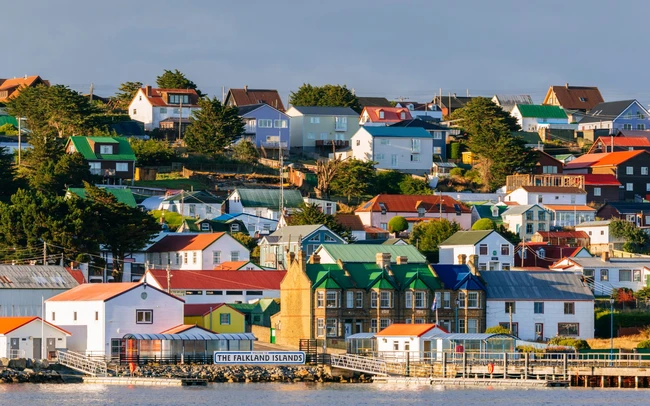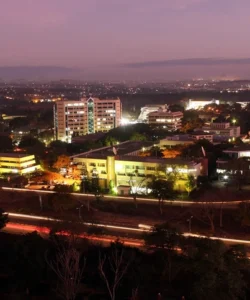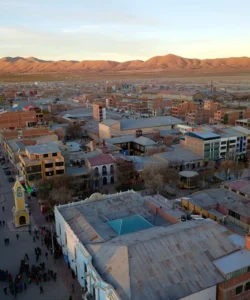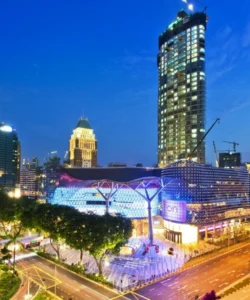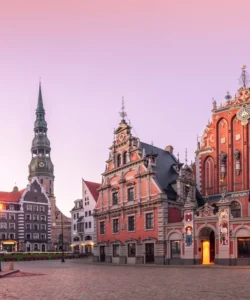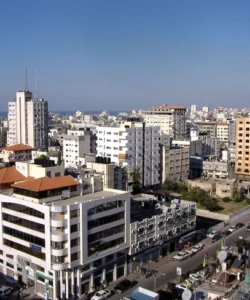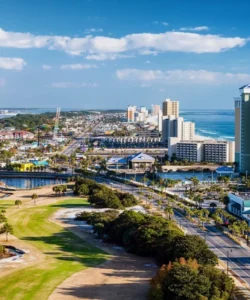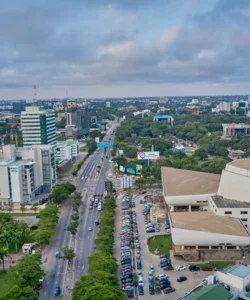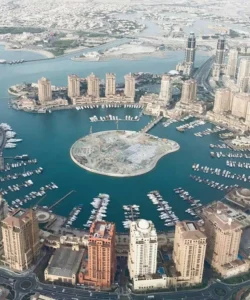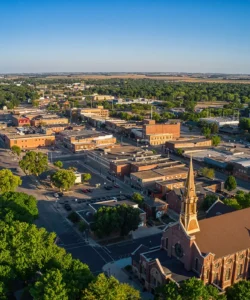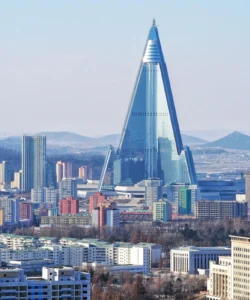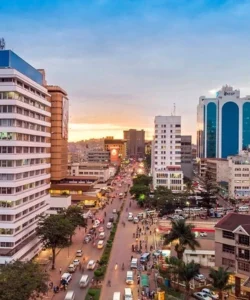The Falkland Islands (Spanish: Islas Malvinas) are a remote archipelago in the South Atlantic Ocean, a British Overseas Territory. They are known for their stunning wildlife, particularly penguins and other seabirds, as well as their unique cultural blend and historical significance, particularly related to the 1982 conflict.
![]()
Area and Population:
The Falkland Islands have a total land area of around 12,000 km² (4,700 sq mi), consisting of two main islands (East Falkland and West Falkland) and over 740 smaller islands. The population is quite small, estimated to be around 3,470 inhabitants as of 2024, making it one of the least populous territories on Earth.
Language:
The official language of the Falkland Islands is English, spoken by everyone on a daily basis. Due to immigration, you may also hear Spanish, Filipino, and Shona spoken by minorities.
Currency:
The currency of the Falkland Islands is the Falkland Islands Pound (FKP), which is at par with Sterling (GBP). Both Falkland Islands banknotes and coins, and British Sterling, are used interchangeably within the islands.
Religion:
The majority of Falklanders identify as Christian, with the main denominations being Anglican (Church of England), Roman Catholic, and United Free Church.
Capital:
The capital city of the Falkland Islands is Stanley, located on East Falkland. It is the islands’ only town and primary settlement, serving as the administrative, economic, and cultural hub.
Major Cities/Towns:
Apart from Stanley, other significant settlements are very small, mostly consisting of isolated farms and wildlife lodges. These include:
- Port Howard: A small settlement on West Falkland.
- Darwin: A settlement on East Falkland.
- Goose Green: A historical settlement on East Falkland.
Attractions and Wonders:
The Falkland Islands are a paradise for nature and wildlife enthusiasts, especially birdwatchers.
- Penguin Colonies: The islands are home to five species of penguins: Gentoo, Rockhopper, Magellanic, King, and Macaroni. Notable colonies can be found at Volunteer Point (largest King Penguin colony), Gypsy Cove, and Sea Lion Island.
- Sea Lion Island: The most southerly inhabited island, renowned for its abundant wildlife including elephant seals, sea lions, and a variety of birds, including King Penguins.
- Steeple Jason Island: Home to the world’s largest colony of Black-browed Albatrosses.
- Stanley: Explore the charming capital with its colourful buildings, Christ Church Cathedral (the southernmost Anglican cathedral in the world), the Whalebone Arch, and the Historic Dockyard Museum (detailing the islands’ social, maritime, and natural history, including the 1982 conflict).
- Battlefield Tours: For those interested in history, tours to sites of the 1982 Falklands War, such as Mount Tumbledown, Wireless Ridge, and Sapper Hill, are significant.
- Wildlife Watching: Beyond penguins, the islands are excellent for spotting other rare birds like the Cobb’s Wren, striated caracara, and various albatrosses, as well as marine mammals like dolphins and sometimes killer whales.
- Stone Runs: Unique geological formations of vast rivers of boulders, a curious natural phenomenon.
Architecture:
The architecture in the Falkland Islands, particularly in Stanley, has a distinct British colonial feel, adapted for the remote environment.
- Wooden and Iron Buildings: Houses are often brightly painted, mostly constructed from wood and corrugated iron, with charming gardens and intricate wooden fascias.
- Stone Buildings: Older structures and some public buildings like Christ Church Cathedral are made of local stone.
- Government House: A prominent stone-built, slated structure reminiscent of Scottish or Orcadian manors.
- Jubilee Villas: Examples of British terraced townhouses from the Victorian era.
Roads:
The two main islands, East and West Falkland, have comprehensive road networks connecting major settlements and attractions. However, with the exception of a long tarmac section of the Stanley-Mount Pleasant Road, most surfaces are gravel or clay. This means that off-road driving is common for reaching remote wildlife sites, often requiring 4×4 vehicles and experienced local drivers. Self-drive hire vehicles are available but typically restricted to on-road use.
Hotels:
Accommodation in the Falkland Islands is primarily located in Stanley, offering hotels like the Malvina House Hotel and boutique options like The Waterfront Boutique Hotel, along with guesthouses and motels. For wildlife experiences, there are dedicated eco-lodges and guesthouses on outer islands and remote parts of East Falkland (e.g., Sea Lion Lodge, Darwin House, Cobb’s Cottage on Bleaker Island), often providing a full board experience to immerse visitors in nature.
Restaurants and Cuisine:
Falkland Islands cuisine largely reflects its British heritage, with an emphasis on local produce, especially lamb and seafood.
- Key Dishes:
- Falkland Lamb: Famous for its tenderness and distinct flavor, often served roasted or in hearty stews.
- Patagonian Toothfish: A highly prized deep-sea fish, locally known as “toothfish.”
- Falkland Squid (Calamari): The waters around the islands are rich in squid, often served fried, grilled, or stuffed.
- Fish and Chips: A classic British comfort food made with locally caught fish.
- Smoko: An essential Falkland Islands culinary tradition, similar to British tea time, featuring homemade cakes, biscuits, sandwiches, and strong tea.
- Mussels and Queenie Scallops: Plump and sweet shellfish found in the cold, clear waters.
- Diddle-Dee Jam: A local red berry jam made from the native diddle-dee berry.
- Gooseberry Pie / Falkland Berry Crumble: Desserts featuring local berries.
- Restaurants: Dining options are primarily in Stanley, with places like Shorty’s Diner offering local and international fare, and Roses Café for coffee and pastries. Hotels often have their own restaurants serving a mix of local and international dishes. Outside Stanley, dining is usually limited to the lodges, which provide meals for their guests.
